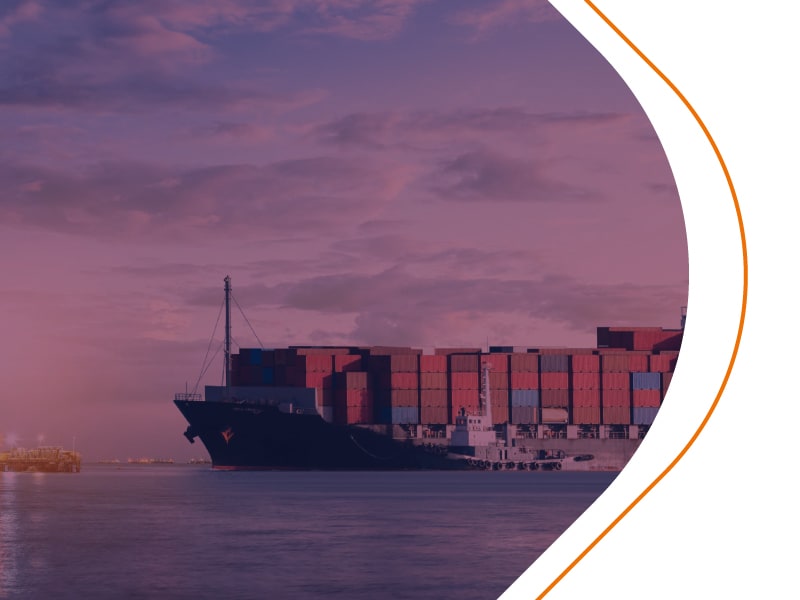Home > TradeEdge > Blogs > How does supply chain traceability contribute to business growth?
How does supply chain traceability contribute to business growth?

Table of Contents
When consumers demand more insights about the origins of goods they purchase and the latter’s sustainability sources, transparency is no longer an option. Businesses also prefer visibility into their operations surrounding their products’ lifecycle. Hence, the demand for supply chain traceability has doubled in recent years. It immunes organizations of the various challenges that industries worldwide are currently confronting.
An overview of current supply chain traceability and other challenges
Even though a company’s supply chain was primarily the primary focus for digital strategies, a recent study showed that the digitization level for an average supply chain was around 43%, which was the lowest among all business areas examined. Reasons for misplaced priority could be technology gaps and management choices. Digital solutions did little to help the supply chain network, which was already grappling with challenges ranging from material and labor shortages to rising freight costs, port congestions to limitations in demand forecasting. However, the major roadblock would be the existing siloes and disjointed sections in the network that perform as separate entities. Hence, real-time information about what is happening in the upstream or downstream supply chain is not available when needed. Therefore, operations like supply chain traceability suffered greatly. However, in some instances, like the food industry, for example, commercial interests restrict data access.
Unarguably, the ability to trace goods in the product lifecycle can definitely improve the integrity of a supply chain. But achieving complete transparency can be a challenging endeavor. A complex and geographically dispersed network of suppliers and distributors makes it harder to embed tech-enabled supply chain traceability solutions into the existing infrastructure. Remote operations remain invisible and poor collaboration between partners adds to the problem. Regardless of the current bottlenecks, supply chain traceability can prove effective in building a resilient, reliable, responsive, and sustainable supply chain to battle ongoing geopolitical instability.
Evaluating the importance of supply chain traceability
Traceability is crucial for businesses as it enables owners to track their offerings from the source of origin to end users. Supply chain traceability allows enterprises to gain more insights into their manufacturing processes and accurately forecast lead times to manage inventories. Moreover, brands can leverage supply chain traceability software solutions to highlight their ethical sourcing practices, as demanded by consumers.
Further, traceability serves various purposes, such as mitigating risks of mislabeling, fostering more detailed audits, and enabling rapid traceability analysis during a product recall. Supply chain traceability also assists businesses in the identification of disruptions in the supply chain and staying responsive to sudden changes. And information about strategic opportunities is available on time to allow prompt reactions to demand fluctuations.
Supply chain traceability has garnered enough importance primarily for three reasons:
As mentioned above, traceability is the need of the hour, and organizations need to embrace the change to stay competitive in the already saturated market.
What is supply chain traceability?
Supply chain traceability refers to the ability of businesses to effectively track elements of a product or substance and trace their movement along the network from raw goods to finished products.
To keep up with the increasingly volatile business landscape, the global network of supply chains should be more resilient, agile, and flexible. And to stay competitive, enterprises should embrace a transparent and circular value chain to reduce or reuse materials to lower cost and manufacturing waste. This profound shift in the paradigm supported by traceability solutions allows companies to reset their business objectives and strive for operation optimization and excellence. Supply chain traceability provides such information, helping companies to make accurate predictions, optimize operations, respond to changes in demand faster, and fulfill orders more efficiently.
These above-mentioned objectives will eventually transcend into higher returns, better revenue growth, lower costs and increased market share, and overall good stakeholder returns.
Hence, simply put, organizations failing to invest in supply chain traceability solutions will remain vulnerable to market disruptions and allegations about product safety.
Steps to implement supply chain traceability
Since the purpose of supply chain traceability is to build a robust network of suppliers and distributors, the following steps would help enterprises implement various traceability measures effectively.
Identify risks: It is imperative for any organization to evaluate the various risks the company is immediately exposed to, such as compliance risks, historical disruptions, and poor supplier relationships.
Define objectives: After plotting potential operations issues, enterprises can define specific goals that would positively impact their overall performance.
Gather data: Tech-enabled supply chain traceability solutions are leveraged to map the network end-to-end. This improves visibility and fetches valuable insights into the supply chain, allowing enterprises to gauge cargo flow volume, suppliers and processes, potential gaps and risks, and opportunities for improvement and innovation.
Create levels of disclosure: Here, organizations should create various parameters for disclosures of information as stakeholders and customers require. Collecting relevant data and adding actionable insights should be circulated among stakeholders to build brand trust and loyalty.
How does supply chain traceability work?
Traceability empowers companies to easily track the upstream and downstream movement of products and goods along the supply value chain. Further, it also provides exact information about procurements, supplier sourcing, and conversion processes. Such information facilitates accurate predictions, running scenarios, and optimizing operations solutions. This, in turn, helps owners better serve their customers, identify unnecessary resource wastage, respond faster to fluctuations in demand, and deliver orders on time. Supply chain traceability uses various tech-enabled solutions to perform the aforementioned functions, thereby supporting enterprises in identifying strategic opportunities, innovating faster, minimizing the negative impact of internal and external disruptions, and certifying sustainable processes and products.
Key benefits of supply chain traceability
The primary benefits of supply chain traceability would be ensuring regulatory compliance and enhancing brand reputation. Other advantages include the following:
Conclusion
In order for businesses to achieve end-to-end visibility into their supply chain, they need to opt for traceability solutions that are effective and tech-enabled. Supply chain traceability provides the necessary information about the network on time so enterprises can take adequate measures to ensure their business continuity. It creates a collaborative network and facilitates the easy availability of required data. In addition, it communicates information pertaining to products and procurement sources to customers as per their demand.


Possibilities Unlimited
Possibilities Unlimited
Inspiring enterprises with the power of digital platforms
More blogs from EdgeVerve →